Author: Cesare Guariniello
Purpose of EVA: Testing the next phase of the Yagi-Uda antenna-based navigation experiment for navigating back to the hab. Testing with a stranded astronaut in a condition of low visibility
Destination: End of Mountain Goat Road
UDM27 Coordinates:
519750 E
4250500 N
Participants: Cesare, Melanie, Mark (stranded astronaut)
Narrative: This EVA put an astronaut in condition of low visibility, simulating a dust storm. This condition was obtained with a cardboard placed over the top portion of the ExoSuit helmet. The astronaut has visibility limited to about 5m ahead (for reasons of safety) and can look at the handheld radio when navigating, in order to find the direction of the habitat. The crew egressed the habitat with Mark already “under the hood”, and checked the safety of the hooding apparatus, then the three EVA crewmembers started walking Northwest to the intended destination, guided by Cesare’s GPS unit. During the outward path, Melanie and Cesare had Mark stopping multiple times, to spin around and be redirected so as to be completely disoriented. The outward path was also chosen so that the return direction would not follow it.
Once the turnaround point was reached, Mark turned on the Yagi-Uda antenna receiver and began scanning for the radio beacon from the habitat, sent initially at intervals of 5 minutes. Melanie and Cesare took care of the safety of the path chosen by Mark, but let him decide the direction to walk towards. When rock walls occurred, Mark decided the best path around them, and only once he was requested to stop to avoid excessive proximity to a shallow canyon. The EVA gave significant results to the experiment. Mark was able to locate the habitat with adequate precision even when hills and rocks obstructed the line of communication, though a power attenuator might be required in close proximity to the habitat (Mark could navigate close to saturation of the signal, at about 500m from the habitat). A major problem was the difficulty to follow a straight path. Mark always pinpointed the direction towards the habitat, but walked in wide arcs. For this reason, Cesare and Melanie requested continuous transmission of the beacon signal which helped reducing the path error.
Around 1:40 (one hour and 35 minutes into the EVA), the weather turned to rain. The crew immediately reported the occurrence to the HabCom. Upon indication by the commander the EVA was scrubbed immediately, Mark was unhooded, and the EVA team returned to the hab (which had been in sight for about 20 minutes, and was only 500m away) without delays and ingresses the airlock after collecting two soil samples from the immediate vicinity of the habitat, to be analyzed for use in the Greenhab by future crews.
Cesare Guariniello, crew geologist
Crew 186 – Boilers2Mars
Mars Desert Research Station


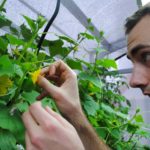
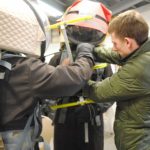
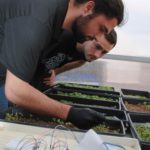
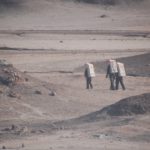
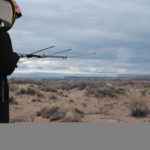

You must be logged in to post a comment.